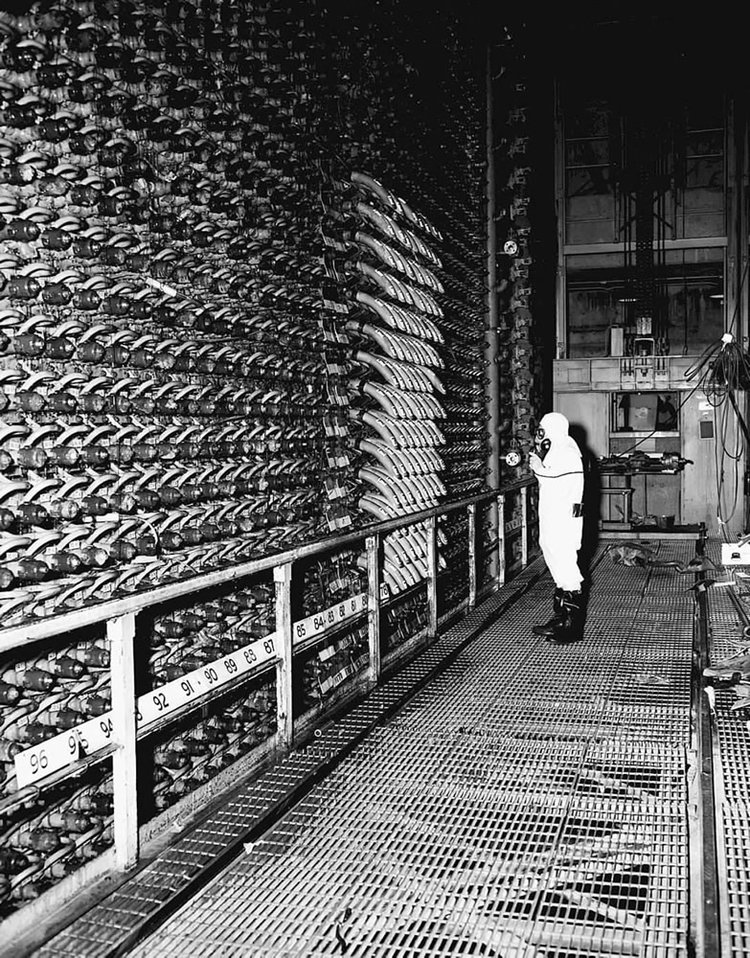The atomic explosion that struck Nagasaki in 1945 can be traced back to the Hanford Site, an unsuspecting desert in Washington state where colossal quantities of radioactive material were produced in the 20th century. Its days of pumping out plutonium are long gone, but the site has left a nuclear hangover that continues to curse the country.
Stretching across roughly 1,550 square kilometers (600 square miles) in southeastern Washington, the Hanford Site was set up in 1943 by the Manhattan Project for the sole purpose of producing plutonium on an industrial scale. Using nine nuclear reactors and five large plutonium processing complexes, huge quantities of weapons-grade plutonium were forged by irradiating uranium fuel rods.
The material produced here was responsible for some of the most destructive explosions ever created by humans, which is why writer Steve Olson aptly referred to it as “the Apocalypse Factory” in his 2020 book about the site.
In the site’s early days, plutonium would be sent from Hanford to the Los Alamos Laboratory in New Mexico, where Manhattan Project scientists would use it in the development of atomic weapons. Some of this material ended up in the atomic bomb used in the Trinity Test, the first denotation of a nuclear bomb, and the “Fat Man” dropped on Nagasaki in the last days of the Second World War.
The site, located in a rural part of Washington’s Benton County, was chosen because of the abundant supply of cold water provided by the Columbia River, which was needed to cool its nuclear reactors.
The location was also relatively remote, although hundreds of people were kicked out of their homes to create it. In early 1943, some 1,500 local residents received a letter from the US Government saying they were to vacate their property within 90 days. Meanwhile, the Army was deployed to prohibit several local Tribes, who had relied on the area for traditional practices since time immemorial, from returning.
A worker at Reactor F of the Hanford Site.
Image credit: US Department of Energy (Public Domain)
Between 1944 and 1989, the site produced 74 tons of plutonium for the country’s nuclear weapons program. Needless to say, this created a hell of a lot of radioactive byproducts and waste, including 56 million gallons of irradiated waste that was stored in 177 large underground tanks, made of concrete and lined with steel.
Production ceased in the late 1980s towards the end of the Cold War and a program was launched to clean up the site, but the process has proven to be tricky.
Over the years, it’s estimated that the Department of Energy discharged millions of gallons of wastewater directly into the soil and the Columbia River. A 1992 article published in the New York Times explains that radiation released from the Hanford site into the river had reached the Pacific Ocean, over 322 kilometers (200 miles) downstream. Along the way, it contaminated fish and drinking water, exposing thousands of people to “potentially dangerous doses. “
Along with the intentional release of wastewater, the underground storage tanks have been riddled with problems and are prone to leaks. In 2013, the governor of Washington claimed that the tanks were losing 150 to 300 gallons every year. This escaped water seeps into the surrounding soil and aquifers, spreading throughout the wider environment.
Groundwater contamination totaled about 207 square kilometers (80 square miles) in the 1980s, and some 155 square kilometers (60 square miles) of groundwater remains contaminated above federal standards. As a result, large parts of the site are off-limits to people.
The radiation has had a serious effect on the health of people in the region, even decades after the site was shut down. Increased rates of cancer, thyroid diseases, infertility, and lymphatic illness have been reported in people living near the Hanford Site, who have become known as “downwinders”.
A 2003 study of “downwinders” who lived near the Hanford site between 1944 and 1995 revealed heightened rates of various cancers, notably thyroid cancer, central nervous system tumors, and cancers affecting the female reproductive system.
Officials are still struggling to solve many of the problems at Hanford and the cleanup isn’t expected to be completed for several more decades. However, the impact of this relatively brief spell of plutonium plundering will remain for much, much longer.
“Plutonium has a half-life of 24,000 years, which makes it an inherently intergenerational problem. Cleanup doesn’t make Hanford’s waste disappear,” Dr Shannon Cram, assistant professor in the School of Interdisciplinary Arts & Sciences at the University of Washington Bothell, said in a 2023 statement.
“Much of it will be there forever, in human time scales.”
Source Link: Hanford Site: The "Apocalypse Factory" At The Heart Of The Manhattan Project
